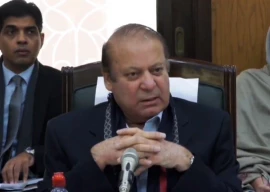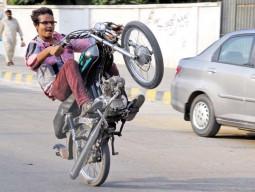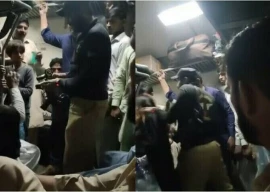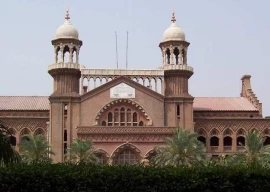
The United States has intensified drone aircraft missile strikes in Pakistan's northwest along the Afghan border, killing 66 suspected militants since June 3.
Here are some questions and answers on the drone attacks, which have risen sharply under the Obama administration.
What are drones and how are they operated?
The CIA operates a covert drone programme which targets suspected militants in countries like Pakistan.
It's possibly the United States' worst-kept secret even though it has opened up a debate about the legality of international state-sponsored killing of adversaries.
The United States is essentially deploying aerial robots to wage war along the inaccessible border region between Pakistan and Afghanistan.
The drones conduct intelligence and reconnaissance missions and fire missiles at the enemy.
Drone "pilots" at CIA headquarters in Virginia move joy sticks around as they watch live video feeds of militants entering compounds, moving along winding mountain roads or planting bombs in northwest Pakistan, which President Barack Obama has called "the most dangerous place in the world".
Militants who spent years fighting with AK-47 assault rifles are suddenly killed with the push of a button. At the end of the work day, drone pilots simply switch off their office lights and head to their homes in places like Virginia suburbs.
The $20 million Predator drone unit, which is widely used in Pakistan, consists of four aircraft, a ground control station and satellite link. Predators have a wingspan of 55 feet and length of 27 feet and are equipped with two laser-guided Hellfire missiles.
How successful is the programme?
US officials have described drones as a very effective tool for eliminating high-value enemies in northwest Pakistan, where human intelligence is hard to come by because anyone who provides it risks the wrath of militants.
In one of the most high-profile kills, Tehriki-i-Taliban Pakistan leader Baitullah Mehsud was spotted on the rooftop of his father-in-law's house in a village in South Waziristan in 2009.
Live video feeds showed Mehsud, who had health problems, on an intravenous drip. Predator Hellfire missiles then killed the Pakistan’s top enemy.
Statistics from the New America Foundation raise doubts about the success of the drones. It estimates militant deaths from drone strikes in Pakistan between 2004-2011 could have been as high as 1,979. Only 35 of those were militant leaders.
Even if more high-profile militants are killed, the strikes often undermine US efforts to win public support in Pakistan.
The New America Foundation estimates the drone's non-militant fatality rate at about 20 percent since 2004.
The strikes are unlikely to ease. The programme partly reflects Washington's frustrations with Pakistan, often described as an unreliable partner in the US war on militancy launched after the Sept. 11 attacks.
Pakistan has come under even stronger pressure to cooperate with the Americans since US special forces found and killed Osama bin Laden in Abbottabad on May 2.
Why so many drone strikes lately?
According to New America Foundation data, the United States has conducted 40 strikes this year so far; 118 in 2010, 53 in 2009. This year 72 pct of the attacks were in North Waziristan and 28 pct in South Waziristan.
Most of the recent strikes have focused on an area in South Waziristan controlled by militant leader Maulvi Nazir, whose fighters cross the border to attack American troops in Afghanistan. Nazir and the Government of Pakistan have had a non-aggression pact since 2007. US attacks on Nazi's turf is one more way of pressuring Pakistan and sending a message, intransigence will no longer be tolerated after it was discovered Bin Laden was living here.
But, again, drone attacks often come at a price. Nazir's commanders have said they would step up their fight against US troops in Afghanistan if the drones keep coming. It's always possible his group could blame the Pakistani government for the drone strikes on his area and turn against the state. Pakistan already has its hands full with the Taliban.
Why do Pakistan leaders put up with the drones?
Publicly, Pakistani officials make all the right noises about the drones, saying they violate Pakistan's sovereignty and warning the Americans they are driving angry Pakistanis into the arms of militant groups. But analysts say successful drone strikes, especially those that kill senior militants, would not be possible without help from Pakistani intelligence agencies.
The bottom line is Pakistan's fragile economy could not survive without billions of dollars in US aid so telling the Americans to halt the strikes is not a realistic option.
And Pakistan clearly doesn't mind when the likes of Baitullah Mehsud are eliminated by American missiles.
_______________________________________________
[poll id="412"]
COMMENTS (17)
Comments are moderated and generally will be posted if they are on-topic and not abusive.
For more information, please see our Comments FAQ












































@Rashid Khan:
No, because if the Pak army moves in and kills hundreds of civilians and a handful of militants then there is no outcry. Most Pakistanis are pure hypocrites on this matter. They would have no problem if it was their own govt doing it (or the Saudis for that matter).
It is plain and simple nationalism and anti-Americanism cloaked in "concern" for their tribals. Give us all a break. Most Pakistanis could care less about the people of the tribal areas. Look at their history of "development" (or lack thereof) to understand this.
The drone attacks occur for one simple reason: because the Pak govt and army refuses to take "sovereign" control of their territories and prevent cross-border terrorism.
This is an old issue and the reason has never changed no matter all the emotional reactions and blame-shifting. No safe havens = no drones. Breeding ground for regional and int'l terrorism = drones with little mercy.